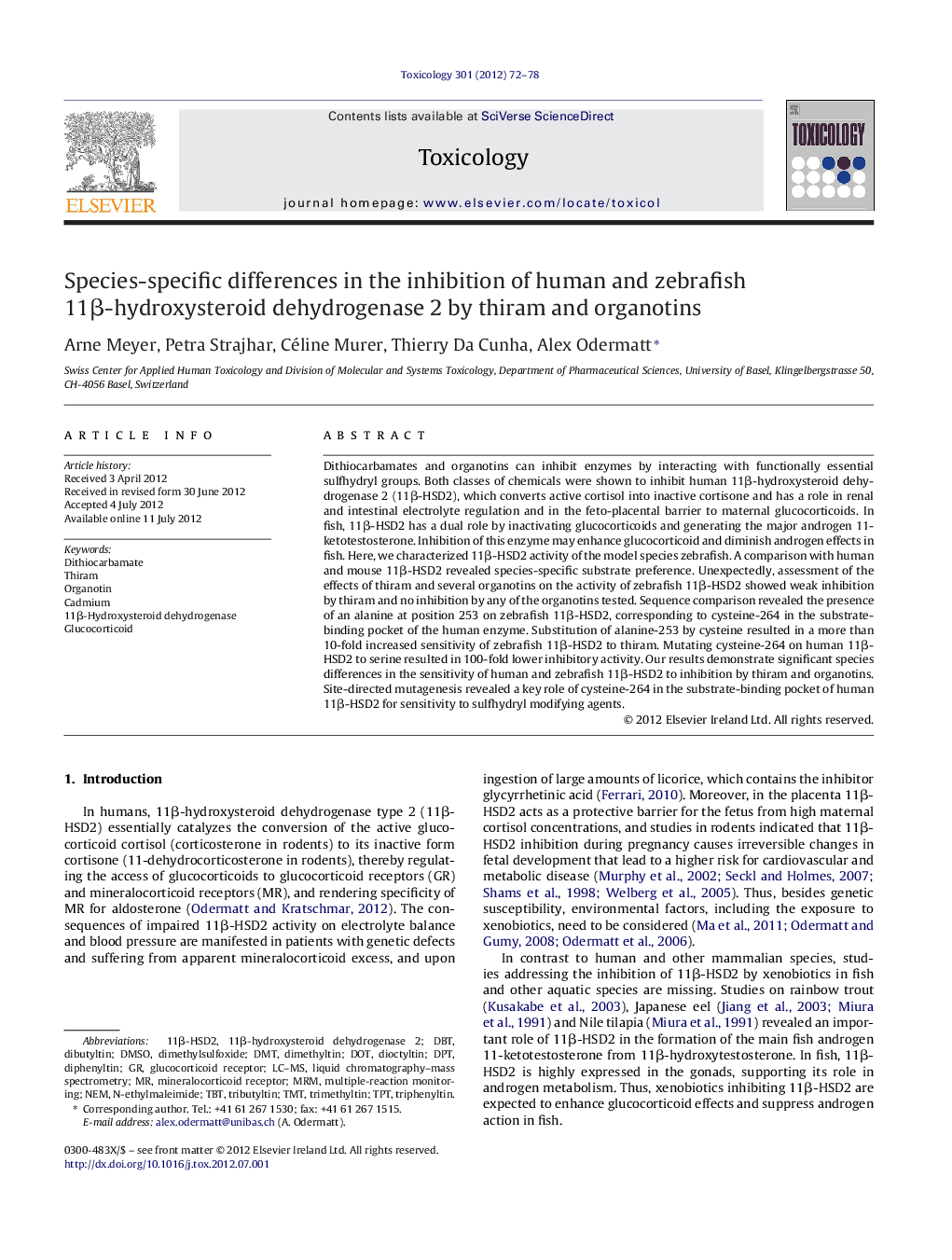| کد مقاله | کد نشریه | سال انتشار | مقاله انگلیسی | نسخه تمام متن |
|---|---|---|---|---|
| 2595752 | 1562355 | 2012 | 7 صفحه PDF | دانلود رایگان |

Dithiocarbamates and organotins can inhibit enzymes by interacting with functionally essential sulfhydryl groups. Both classes of chemicals were shown to inhibit human 11β-hydroxysteroid dehydrogenase 2 (11β-HSD2), which converts active cortisol into inactive cortisone and has a role in renal and intestinal electrolyte regulation and in the feto-placental barrier to maternal glucocorticoids. In fish, 11β-HSD2 has a dual role by inactivating glucocorticoids and generating the major androgen 11-ketotestosterone. Inhibition of this enzyme may enhance glucocorticoid and diminish androgen effects in fish. Here, we characterized 11β-HSD2 activity of the model species zebrafish. A comparison with human and mouse 11β-HSD2 revealed species-specific substrate preference. Unexpectedly, assessment of the effects of thiram and several organotins on the activity of zebrafish 11β-HSD2 showed weak inhibition by thiram and no inhibition by any of the organotins tested. Sequence comparison revealed the presence of an alanine at position 253 on zebrafish 11β-HSD2, corresponding to cysteine-264 in the substrate-binding pocket of the human enzyme. Substitution of alanine-253 by cysteine resulted in a more than 10-fold increased sensitivity of zebrafish 11β-HSD2 to thiram. Mutating cysteine-264 on human 11β-HSD2 to serine resulted in 100-fold lower inhibitory activity. Our results demonstrate significant species differences in the sensitivity of human and zebrafish 11β-HSD2 to inhibition by thiram and organotins. Site-directed mutagenesis revealed a key role of cysteine-264 in the substrate-binding pocket of human 11β-HSD2 for sensitivity to sulfhydryl modifying agents.
► High sensitivity of human 11β-HSD2 to inhibition by sulfhydryl-modifying agents.
► Low sensitivity of zebrafish 11β-HSD2 to inhibition by sulfhydryl-modifying agents.
► Cys264 mediates sensitivity of human 11β-HSD2 to sulfhydryl-modifying agents.
► Lack of cysteine at this position explains resistance of zebrafish 11β-HSD2.
Journal: Toxicology - Volume 301, Issues 1–3, 15 November 2012, Pages 72–78